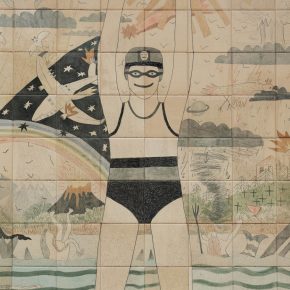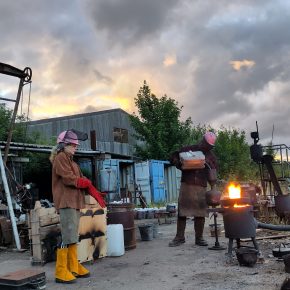ANNA MACLEOD, REACH SCOTLAND RESIDENT
We are delighted to have Anna Macleod at the ESW for her REACH Scotland Residency. Anna will be in residence until 14 August 2023 developing new work.
Anna Macleod is an independent visual artist and researcher based in the rural Northwest of Ireland. Her work mediates complex ideas associated with contemporary, historical, and cultural understandings of land and water through a variety of visual art media. She has exhibited extensively in Ireland and Internationally since the 1990’s. Most recent awards in 2021 include Visual Arts Bursary Award from The Arts Council of Ireland, Platform 31Award, Association of Local Authorities in Ireland & residency exhibition awards at An Lanntair Art Centre, Isle of Lewis and Centre Culturel Irlandais, Paris in 2021 and 2022.
During her residency, Anna wishes to develop a research and sculpture making project as an edition of her series of works ‘Water Conversations’, which looks at the socio – economic – environmental – cultural resonances of water in a variety of global locations.
Like many city rivers The Water of Leith has had a multitude of identities as it weaves its way through time and post-industrial cityscapes. Its course from source to sea is of interest to Anna as a way to talk about the redemptive qualities of water in both its physical and metaphysical forms. Another area of interest is the phytoremediation qualities of common river plants through the filtering and cleansing of contaminates in flowing water. A source of hope in the power of the ‘common’.

We met Anna in her residency studio at ESW and she told us more about her project:
Currently my practice focusses on water and the multifaceted ways that the subject of water can be understood through social, cultural, economic and environmental, human and non-human perspectives. I began working with water 17 years ago and the numerous projects to date have an umbrella title: Water Conversations.
I’ve worked in many different countries looking at how water forms landscape and human cultures while studying the threats to water security through climate change, industrial pollution, failure of infrastructure.
This edition of Water Conversations with a working title ‘ Uisce Lite : Flora Edinensis’ is a celebration of the iconic Water of Leith city river and the importance of its rehabilitation.
Many of the projects I’ve done have been in very degraded environments where the water has been very badly affected by a whole range of factors, human factors… and I wanted to do a Water Conversations project about the river in my hometown, Edinburgh, I’m originally from Edinburgh, although I’ve lived in Ireland for long time.
When I was a child, the Water of Leith ran past our house in Cannonmills, there were some very overgrown and neglected walkways and, the river was very polluted. Since I’ve been visiting Edinburgh in recent years, I’ve been following the work of The Water of Leith Conservation Trust, and the important work they have done to rejuvenate the river habitats, growing wildflower meadows and raising awareness of the critical issues surrounding water and biodiversity.
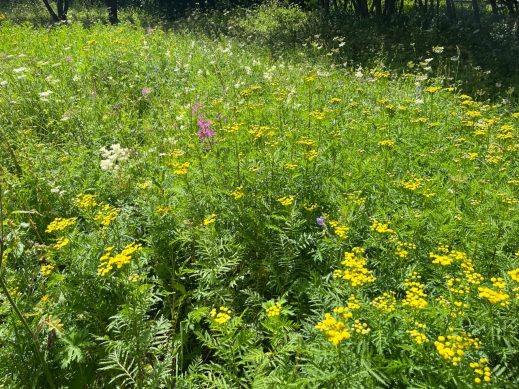
Conservation meadow, Water of Leith. Colington. 16th July 2023
I thought I would like to do a positive celebratory project about the Water of Leith as a way to talk about climate resilience through community action & to raise awareness of the importance of keeping freshwater safe. In Ireland & Scotland we have good water situation, in general. There have been debates about privatisation of water and, in Ireland there were violent protests about privatisation and water charges to the extent that, the government quietly shelved the idea for the time being.
I have been training in citizen science for water monitoring with freshwater ecologist Dr Mary Kelly-Quinn of University College Dublin and have become very interested in the role of aquatic invertebrates in riverine health and biodiversity. Dr Kelly-Quinn describes the slow loss of biodiversity in freshwater as a ‘silent tragedy’ she states ‘Globally, freshwater life is facing alarming species loss at rates more severe than on land or in the oceans.’
Caddisfly, sometimes referred to as ‘underwater architects’ are an indicator species of water health being sensitive to temperature and pollution. At the underwater nymph stage of their development they build little protective case for themselves using different materials from the river bed. Their role in the river is one of cleaning maintenance and throughout their life cycle play a vital role in the biodiversity of riverine habitats. They are such an important species I am making small portable sculptures based on their cases, the invisible made visible.
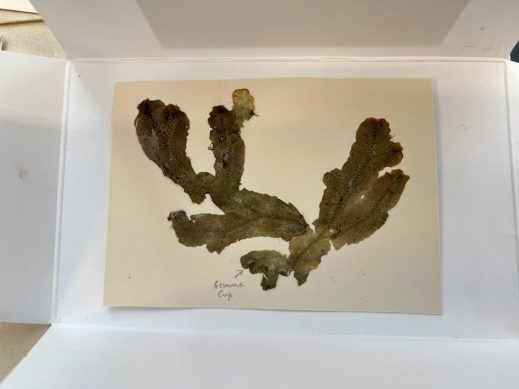

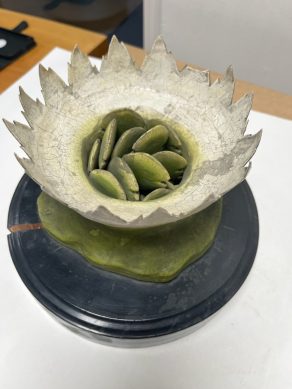

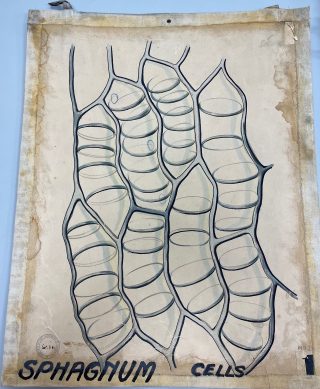
RBGE Herbarium collection / Liverwort / 22 September 1903; Balfour teaching diagram / flax ; Brendel teaching model / Liverwort; Brendel teaching model / Liverwort ( F); Balfour teaching diagram / Spagnum cells
During this research residency at the Edinburgh Sculpture workshop, I am spending time at the Botanic Gardens science building, the Herbarium and Library archives conducting research into the Ethnobotany of common plants along the 35km stretch of the Water of Leith. In this study I am informed by Gregory Kenicers’ ‘A short walk along the Water of Leith, looking at varied and contemporary uses of some of the commonest plants’ 1999.
I am also looking at the teaching models and diagrams of the longest serving Regius Keeper at the gardens, John Hutton Balfour ( 1808 – 1884) who was considered to be an influential teacher of botany and the founder of the Botanical Society of Edinburgh. He was a keen advocate of using art as a way to present and explain science. The collection of 368 paintings and 80 botanical models from the German Brendel company founded in 1866 by Robert Bendel held at the Botanic gardens are wonderful examples of ‘observational studies for the teaching of botany showing the constituent parts of flower, the fruit, the seed and the stem physiology.’
And you are making this sculpture inspired by it.
Yes, as a celebration of the river. I’m looking at the factors that are showing or evident along the Water of Leith that indicate that the health of the water is improving with the reintroduction of 100s of meadow plant species along the river walks and the evidence of an increase of aquatic invertebrates.
In the research stage currently, I am developing sculptures here in the casting workshop towards a performative river walking event next summer. I am working with the Water of Leith Conservation Trust to develop the performative walk as an event with community participation that includes talks on biodiversity, ethnobotany and freshwater ecology.
Katie Anderson, a textile maker and researcher is working with me to develop the wearable textile sculpture that I’ll be wearing on the performative walk. We are using some of the common plants that grow along the river to dye the threads for the embroidery elements of the work. Sarah Clarkson, a plant dye specialist and herbalist is advising the project, the plants to focus on that have medicinal applications and deep folkloric connections.
I visited the Wemyss Needlework School and museum where I looked at the different styles of embroidery and learned about the social importance of needlework and the schools’ ethos in the lives of working women in Scotland in the 19th century. I’m learning crewel style of embroidery from Sheila at Wemyss.
I’m beginning to set up flower forms, at the moment, informed by the collection in the herbarium & developing drawings that will be embroidered on the walking sculpture that I make. And then the walking participants, other than myself will be carrying sculptures that are related to the Caddisfly cases.
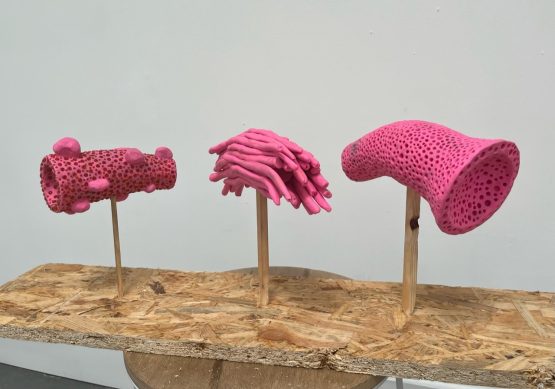
Caddisfly models / for casting
It’s quite an ambitious project. Will you have enough time?
Well, I hope to have the research completed during this six-week residency as well as making the moulds for casting and perhaps some successful casts too. Over the winter I can work on the embroidery and come back next year to do the performative elements of the work.
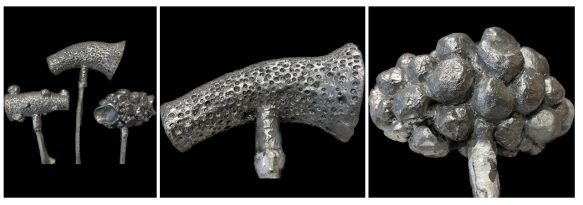
Successfully Aluminum cast
Find more about Anna’s fascinating work here


